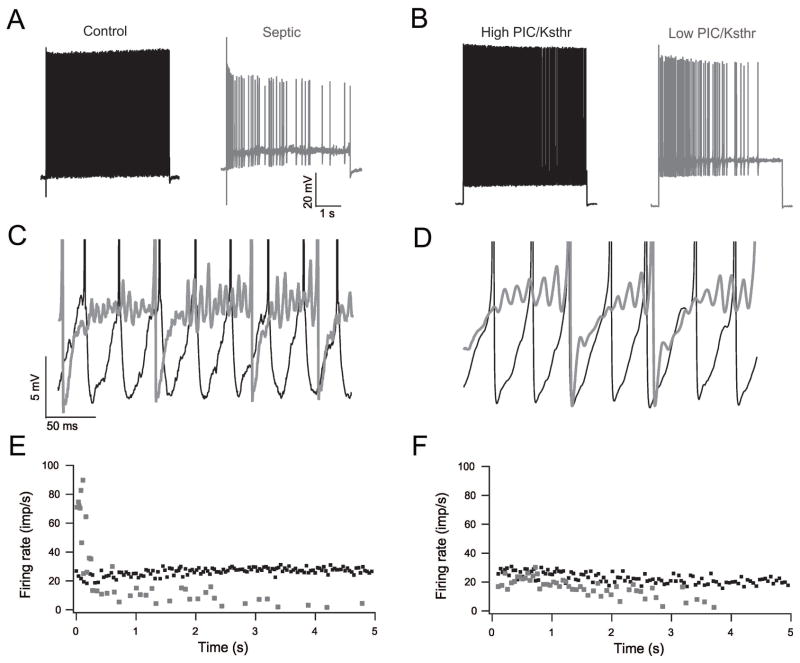Figure 1.
Reducing the PIC/Ksthr ratio in a motor neuron model reproduces sepsis-induced oscillations, reduced firing rate and increased variability of firing rate. A) Shown are comparison of action potential traces of control (black) and septic (gray) motor neurons. Firing of the septic motor neuron is slow and irregular. B) Action potential traces from modeled motor neuron with high PIC/Ksthr ratio (black) and low PIC/Ksthr ratio (gray). When PIC/Ksthr ratio is low, firing of the motor neuron is slow and irregular. C) Superimposed blow-ups focusing on the voltage range near action potential threshold for the real control (black) and septic (gray) traces from the trials shown in A. In the trace of the motor neuron from the control rat there are no subthreshold oscillations in membrane potential such that firing is rapid and regular. In the trace from the septic rat there are subthreshold oscillations in membrane potential such that firing is irregular. D) Superimposed blow-ups focusing on the voltage range near action potential threshold for the modeled motor neurons. In the trace of the modeled motor neuron with high PIC/Ksthr ratio (black) firing is rapid and regular. In the trace from the modeled motor neuron with low PIC/Ksthr ratio (gray) subthreshold oscillations are present. E) Plot of the instantaneous firing rate during the trials of the real motor neurons shown in A. The control motor neuron fires more rapidly and consistently at a similar level of current injection above rheobase current. F) Plot of the instantaneous firing rate during the trials of the modeled motor neurons shown in B. When the PIC/Ksthr ratio is reduced the mean firing rate is reduced and firing rate is more variable at the same level of current injection above rheobase current.

